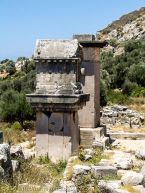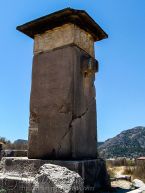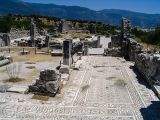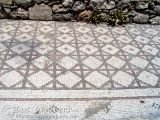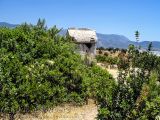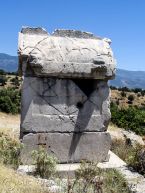The ruined city of Xanthos or Xanthus was once the capital and grandest city of Lycia. In 1988, Xanthos, together with neighbouring Letoon, was included in the UNESCO World Cultural Heritage List.
Historical Background
Homer mentions the Xanthians as being allies of the Trojans. In mythology, Xanthos was connected with the story of Bellerophon and the winged horse Pegasus. On many occasions in history, the Xanthians demonstrated the fierce independence of the Lycian people. Around 540 BCE Xanthos was besieged by the Persians under the command of the Median general Harpagus. Rather than committing to invading forces they destroyed their acropolis and cities, killed their wives, children, and slaves in the fires and finally proceeded on a suicidal attack against the invader.
The ruins of Xanthos were discovered by Sir Charles Fellows in 1838. As it was the custom at that time, he stripped the site of many of its monuments, which were sent to the British Museum. The most beautiful work transported to London was undoubtedly the famous Nereid monument. It was a large Lycian tomb in the form of a temple, dating from about 400 BCE, displaying a mix of Greek and Lycian styles.
Sights & Photos of Xanthos
We started our visit to the site at the famous Xanthian Obelisk, labelled as Inscribed Pillar. This is one of the most important remains at Xanthos. The Xanthian Obelisk is like the Rosetta stone was for our understanding of the ancient Egyptian. It is a pillar tomb which derives its name from the inscription in Lycian and Greek which covers all four faces of the stone. Our understanding of the difficult Lycian language is based on these inscriptions.
South of the Xanthian Obelisk, there is the remarkably preserved Roman theatre with next to it the famous Harpy monument flanked by a Lycian tower tomb. The Harpies monument or Harpy tomb was once topped with a marble chamber which was also taken to the British Museum by Charles Fellows in 1842. The marbles have now been replaced by clay copies of the originals thus restoring part of the beauty of the originals. The plates are decorated with interesting reliefs showing figures from mythology such as the harpies bird-women. Beside the Harpy Tomb is a Lycian sarcophagus which stands on a pillar. More to the south are the remains of the Lycian acropolis with the ruins of a square building, believed to be the palace of the early kings of Xanthos.
To the east, there is the Roman acropolis with the remains of a Byzantine basilica. It is a three-aisled basilica, with its floor covered with mosaics. Further to the east, there is the Belly-Dancer's sarcophagus dating from the 4th century BCE. The long faces of the sarcophagus' lid are decorated with battle and hunting scenes, while the lid's two narrow faces show two belly dancers turning towards each other. This is the reason why this sarcophagus is called the Belly Dancers' Sarcophagus.
More on Xanthos and its history is available on the Lycian Turkey site.
https://www.turkeyphotoguide.com/xanthos?tmpl=component&print=1&page=#sigProIdc7ffbec3c7
Travel Information & Travel Tips
The archaeological site of Xanthos lies close to the village of Kınık, at less than 2 km from Letoon, and 18 km north of Patara.






